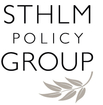Guidance Note and method support on identifying root causes of conflict Mar 30
Sthlm Policy Group · Comments: 8Sthlm Policy Group and Tana Copenhagen were commissioned by Sida to provide input to identify relevant conflicts in all phases of conflict (including risk of severe violence and conflict as in contexts of submerged or rising tension).
The task aimed to strengthen Sida’s capacity to strengthen conflict analysis with regards to the specific task of identifying root causes of conflict and drivers of conflict / peace in different types of contexts; and provide guidance (method support) on how to link identified root causes to appropriate and relevant options for interventions.
This Guidance Note provides methodological input to assist in the further development of Sida’s commissioning, use and application of conflict analysis in support of Swedish bilateral and regional development strategies. The note draws upon and supplements the separate Evidence Brief on root causes and drivers of conflict and peace provided by Tana Copenhagen and Stockholm Policy Group.
Conflict analyses can vary in purpose and their scope and scale. The level of comprehensiveness is linked to the specific purpose of the analysis, normally set out in its terms of reference and including a set of questions to be answered. Often, conflict analysis is intended to inform strategy development and subsequent programming. The required depth of the analysis will vary depending on the specific mandate and principal development objective of a strategy, programme or project.
The note aims to answer the question: How can Sida identify root causes and drivers of conflict and peace and explicitly link them to possible intervention options?
The note therefore focuses on linking root causes of conflict and conflict and peace drivers with programming. It illustrates how to link conflict analysis with interventions able to make an impact on the conflict dynamics in a specific context.
The note provides guidance on how to identify conflict causes and drivers in all phases of conflict, and how to link them to appropriate and relevant options for interventions that address those causes and drivers. Linking the conflict analysis with prospective interventions is critical when deciding what kind of interventions should be implemented. This is the WHAT part of the question. In other words, knowing the root causes and conflict drivers in a specific context will allow Sida to support specific initiatives that can have a positive impact on identified conflict dynamics, thereby promoting peace. Furthermore, understanding the root causes and drivers of conflict will help the development of a theory of change for possible interventions and the assumptions and pre-conditions for these, thereby strengthening also the intervention logic and understanding of the causality envisaged. This will contribute to more robust programming, implementation and monitoring.

Comments: 8